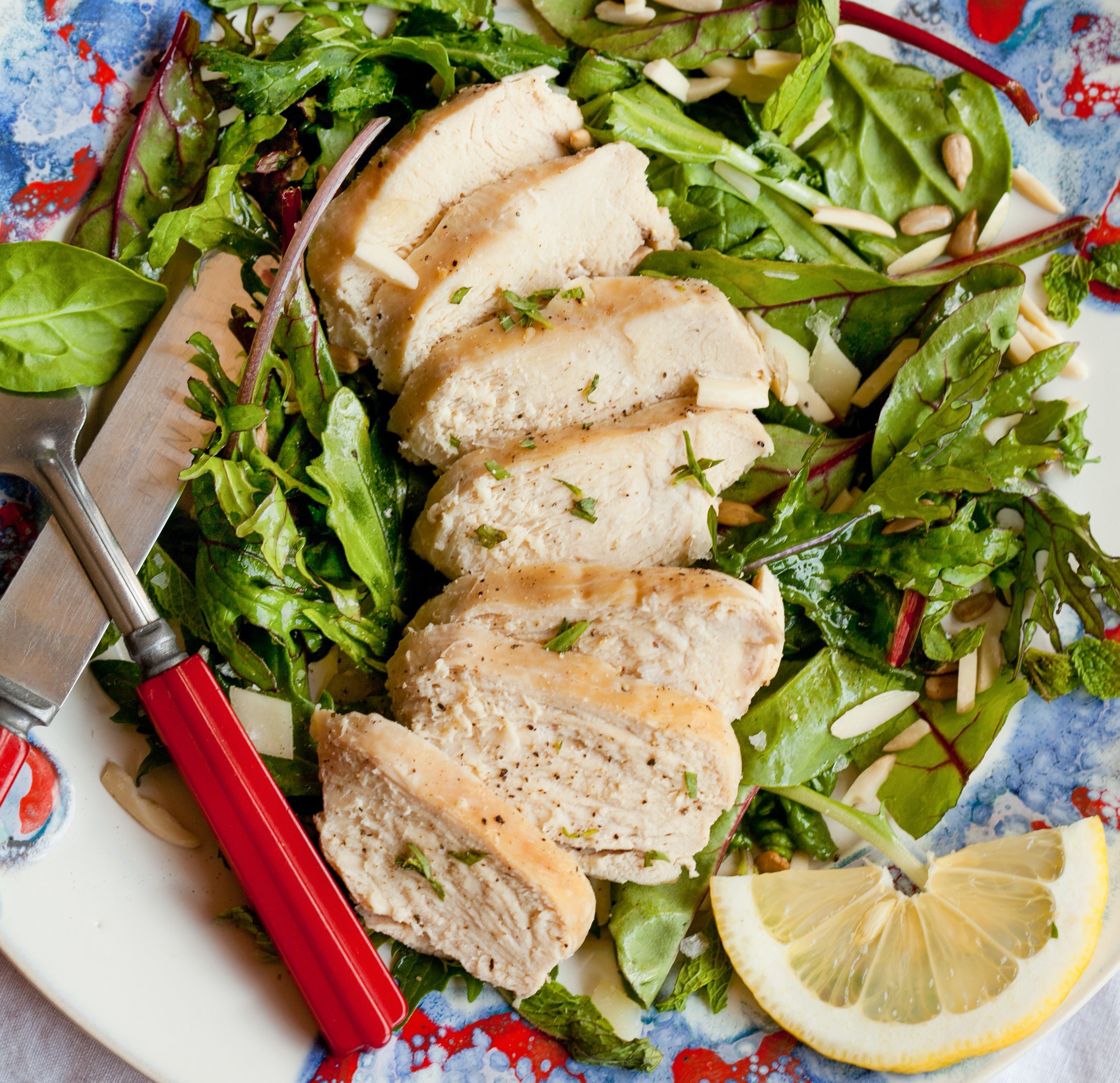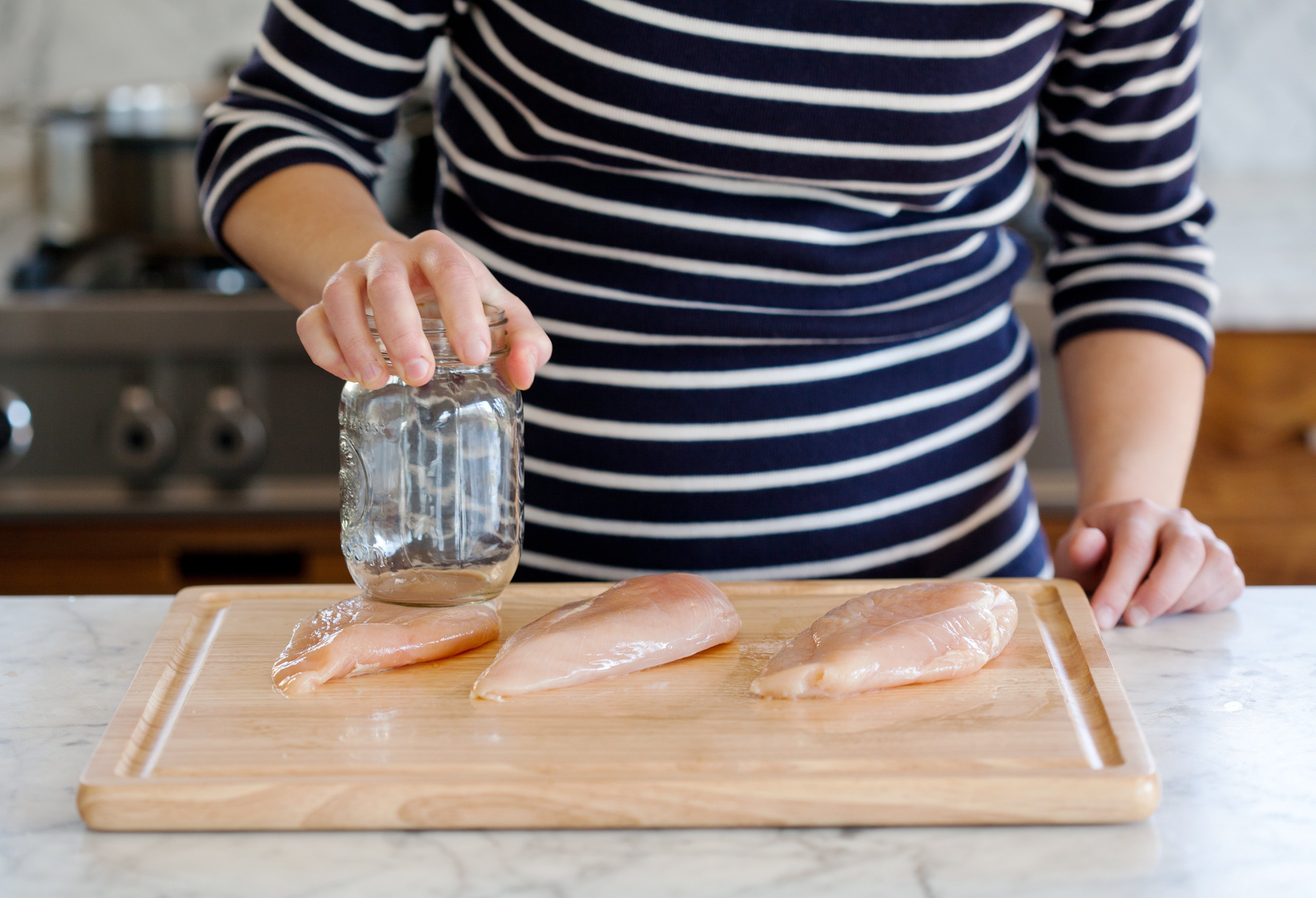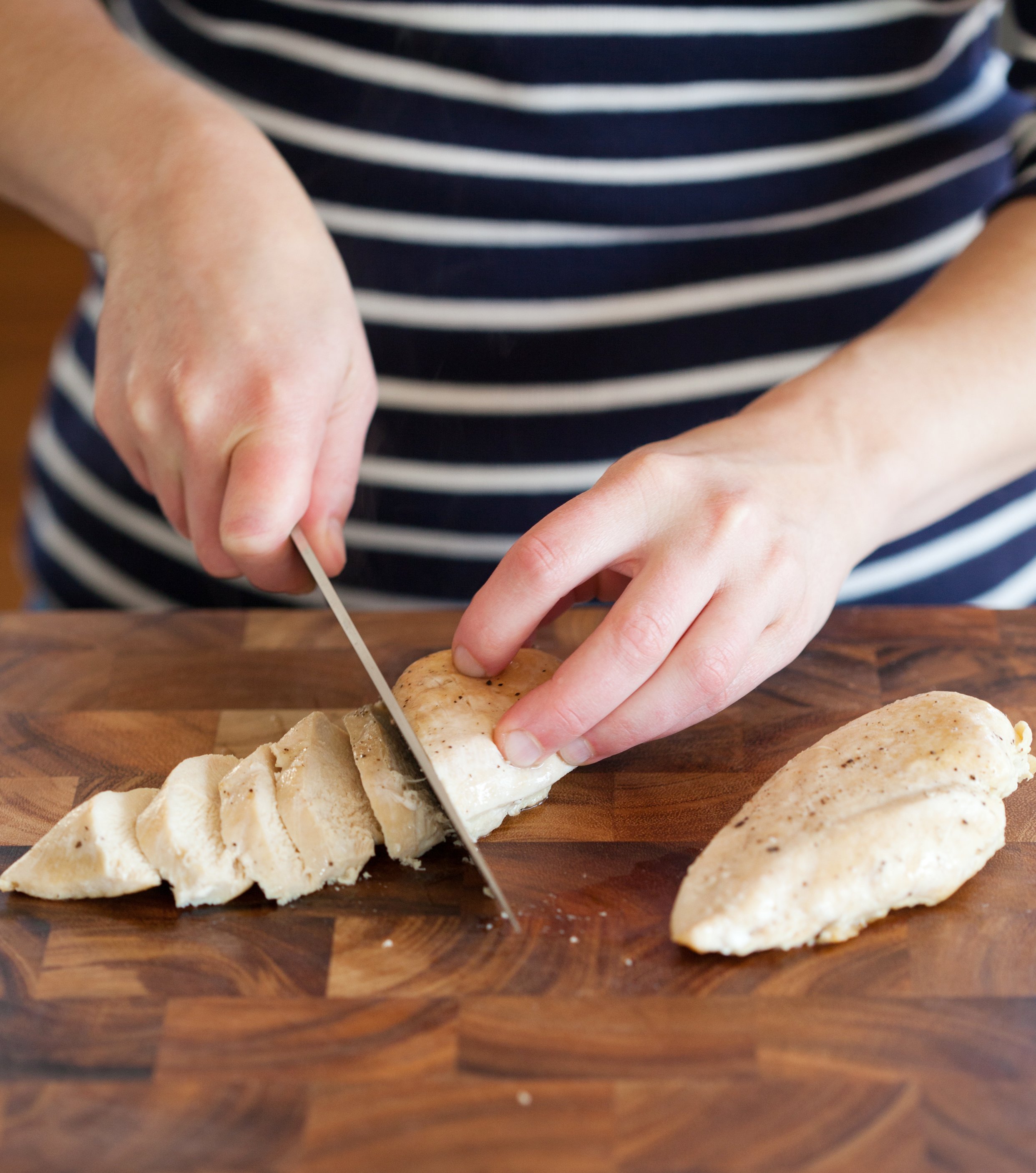How To Cook Moist & Tender Chicken Breasts Every Time
This method takes trust; you can’t check the chicken breasts or watch them cooking. But you won’t have to.
The Kitchn -- Faith Durand -- https://getpocket.com/explore/...source=pocket-newtab
 Photos by Leela Cyd.
Photos by Leela Cyd.
Boneless, skinless chicken breasts (aka BSCBs) — is there anything more boring? They are all too often overcooked until dry and chewy, and I generally prefer more succulent boneless, skinless thighs. But for lunch and dinner favorites like chicken Caesar salad and chicken pasta, sliced juicy chicken breasts can’t be beat. They’re a great staple for quick lunches, too.
Fortunately I have one method that makes unfailingly juicy and tender boneless, skinless chicken breasts. Need some chicken for a salad, or to top some pasta? This is the method. It takes some trust, but believe me — it works flawlessly every single time. .
A Method That Requires Trust!
This method takes trust; you can’t check the chicken breasts or watch them cooking. The method isn’t searing, sautéing, broiling, frying, or baking; it heats the chicken breasts quickly on the stovetop then lets them essentially poach from the inside out in their juices in a covered pan.

So you can’t peek, and you have to trust us. But I promise that if you follow this method exactly, you won’t be disappointed. I learned this cooking method from an old edition of Joy of Cooking, which gives this method its special label: Cockaigne, reserved for only their personal favorite and best recipes.
Seasoning the Chicken
This method alone makes plain, simple chicken breasts — a blank slate to be used on top of salads, rice dishes, and tacos. But you can season the breasts any way you like; make them spicy, or flavor them with fresh herbs.
You don’t need to brine or marinate the chicken, but a quick brine does make them even juicier! Go here for instructions on how to make a super-quick 15-minute brine. (If you use a brine, make sure to pat the chicken very dry before proceeding with the cooking method below.)
Tester’s Notes
Since we originally published this a few years ago, I’ve been surprised at the number of people who have written or commented to say they really love it. It’s truly reliable!
There have been questions about it too — for instance, do you adjust the cooking time if the chicken breasts are extra big?
I don’t; I find that this works across a spectrum of size and weight, provided the breasts are separated into individual halves and they are flattened to even thickness during the prep.
I also originally published this very close to Joy of Cooking’s method, which calls for you to dredge the breasts in flour. I’ve found this is unnecessary, and also undesirable for those who eat gluten-free. I’ve adjusted the method below to not include flour — just salt and pepper. But you are free to tweak and adjust; there are some great suggestions in the comments for dredging in alternative flours like chickpea, and seasoning with all kinds of spices or herbs.
This is truly just a blank slate method; it makes nicely cooked and juicy chicken breast for topping salads and other dishes. I usually make about one pound of chicken breasts at a time, which gives me enough chicken for a few days of salads and lunches. But if you want to turn it into a meal on its own, get creative! No matter how you season them, you’ll have juicy, tender chicken breasts. —Faith, September 2014

Ingredients
- 1 to 4 boneless, skinless chicken breasts, of similar size
- Salt
- Freshly ground black pepper
- 1 tablespoon olive oil, unsalted butter, or combination of both
Equipment
 Cook the chicken breasts over medium heat for 1 minute without moving.
Cook the chicken breasts over medium heat for 1 minute without moving.
Instructions
Flatten the chicken breasts. Pound the chicken breasts to an even thickness with the bottom of a wide jar or glass. You can also use the bottom of a small frying pan.
Season the chicken breasts. Lightly season the chicken with salt and pepper.
Heat the pan. Heat a frying pan large enough to fit the chicken in a single layer over medium-high heat. When it is quite hot, add the olive oil (or butter, if using). Swirl the pan so it is lightly covered with the olive oil.
Cook the chicken breasts over medium heat for 1 minute without moving. Reduce the heat to medium. Add the chicken breasts. Cook undisturbed for just about 1 minute to help them get a little golden on one side (you are not actually searing or browning them).
Flip the chicken breasts. Flip each chicken breast over.
Turn the heat down to low. Reduce the heat to low.
Cover the pan and cook on low for 10 minutes. Cover the pan with a tight-fitting lid. Set a timer for 10 minutes, and walk away. Do not lift the lid; do not peek.
Turn off the heat and let sit for an additional 10 minutes. After 10 minutes have elapsed, turn off the heat. (If you have an electric stove, remove the pan from the heat.) Reset the timer for 10 minutes and leave the chicken breasts in the pan. Again, do not lift the lid; do not peek.
Remove lid and take temperature. After the 10 minutes are up, uncover and your chicken is done. Make sure there is no pink in the middle of the chicken breasts. If you want to be absolutely sure it is cooked, you can use an instant-read thermometer to check -- the chicken should be at least 165°F. Slice and eat.
 Slice and eat.
Slice and eat.
Recipe Notes
Dredge in seasoned flour: You can also dredge the chicken breasts in flour before cooking. Season the flour with spices or fresh herbs and make sure the chicken is golden on one side before you flip it over. This will give your chicken a very subtle crust.
Quick brine: You can make your boneless skinless chicken breasts even juicier and more flavorful with a super-quick brine. Even just 15 minutes in a simple brine will make them juicier. Watch the video above to see how this is done.
Storage: Leftovers can be refrigerated in an airtight container for up to 4 days or frozen for up to 2 months.
This post originally appeared on The Kitchn and was published September 11, 2015. This article is republished here with permission.
